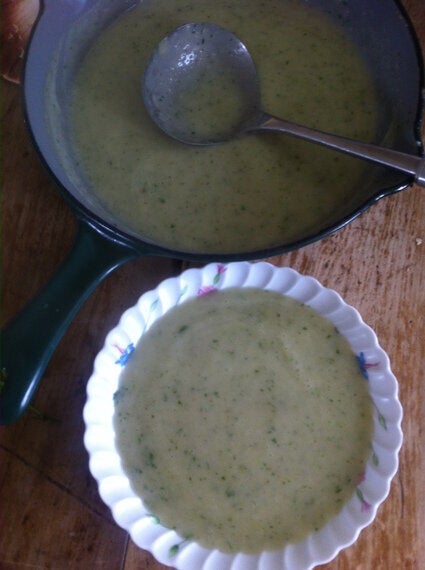
I call the lochan by the supermarket of the Isle, Lily Loch. It never ceases to amaze me that such an exotic water plant can clog up Uist ditches and lochs. On a day when the sun shines, a lily clad lochan is heart lifting even in the breezy Outer Hebridean wind. The lilies of the Outer Hebrides lack the pampering of those in Giverney, where once upon a time Claude Monet employed folk to dust the pads. Indeed he paid for a dirt track to be resurfaced to avoid dirt blowing on to his beloved lilies.
Lilies are sensible things, they don't bother to open on a dull day and knock off mid afternoon, to grab their beauty sleep, I presume. This summer, on the Isle of South Uist they flowered late and don't seem to have any intention of making up for lost summer hours. However, tangled in amongst the lilies is a second, autumn growth of watercress, which is rather exciting. Lily stems are considered a delicacy by some. I've yet to come up with a recipe that I find really tempting but the fiery taste of watercress Rorippa nasturtium -aquaticum however, is a most welcome addition to my September foraging basket. Unlike the nettle, which must be picked when young, older watercress stems are more flavoursome. There is a lookalike, aptly named Fool's Watercress but it is rather bland and won't poison you. The other issue with wild watercress is the larvae of the flat worm, liver fluke; so called because it destroys the livers of mammals including humans. For this reason avoid gathering watercress in slow flowing rivers, where cattle and sheep graze. Cooking will kill the parasite, so if in doubt cook your wild watercress.
Watercress like seaweed, is in vogue with those who are nutrient stir-crazy. I cook for taste and have yet to be convinced by superfood hype. I do however, cook with real, raw ingredients and have a healthy approach to foods that should be eaten in moderation. This said, the following recipe has two ingredients which may appeal to the health gurus, some local Machair potatoes, a shallot and water. I'm not overly worried by nutritional breakdowns but the ingredients (shallot aside) in this soup are local to the Isle. Watercress, dulse and potato soup is simple to make and is warming on a chilly autumn day.

Watercress, Dulse and Potato Soup.
2tbsps olive oil
Shallot, finely chopped
2 tbps. watercress stalks
2 medium potatoes, peeled diced
Tbps dried and flaked dulse
750ml water
2 large handfuls watercress leaves, washed
Heat the olive oil in a pan and sauté the shallot, watercress stalks, diced potatoes and dulse. Cook briefly for 2-3 minutes, stirring as necessary.
Add 3/4 of the water and bring the pan to the boil. Cover and simmer for c12-15 minutes until the potato is soft.
Add the watercress leaves and cook for a further 2-3 minutes.
Blend in a liquidiser and add water to desired consistency.
Return the soup to the pan, season to taste, reheat for 1-2 minutes and serve.